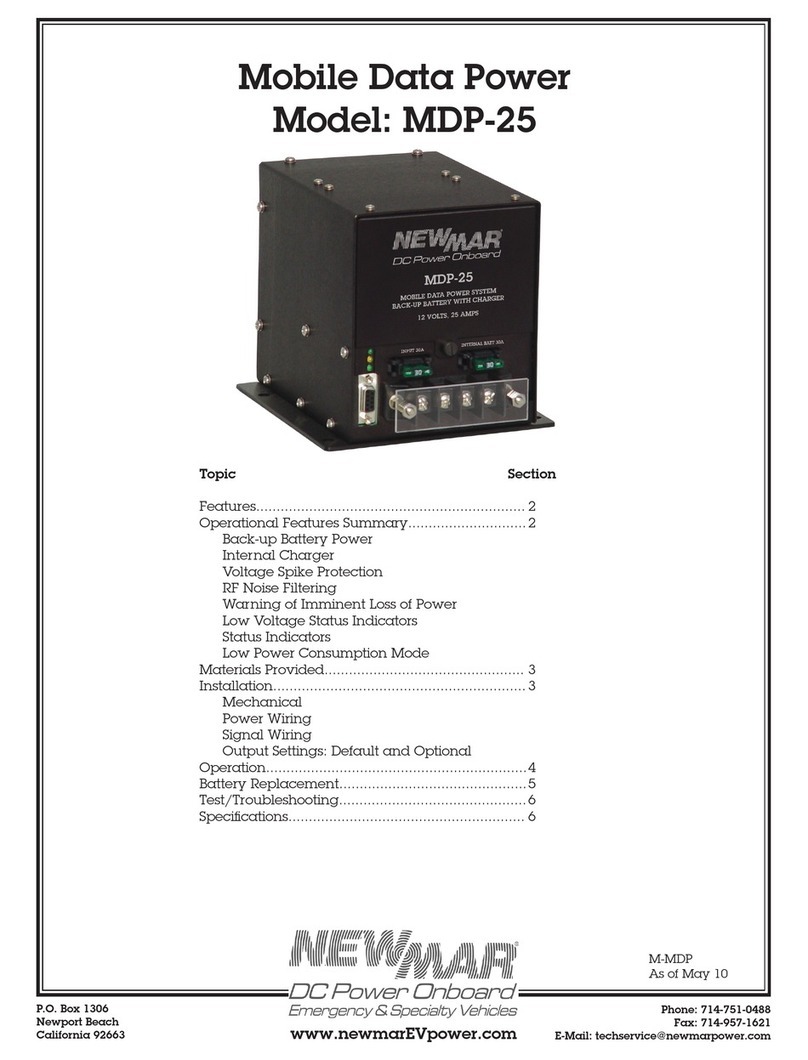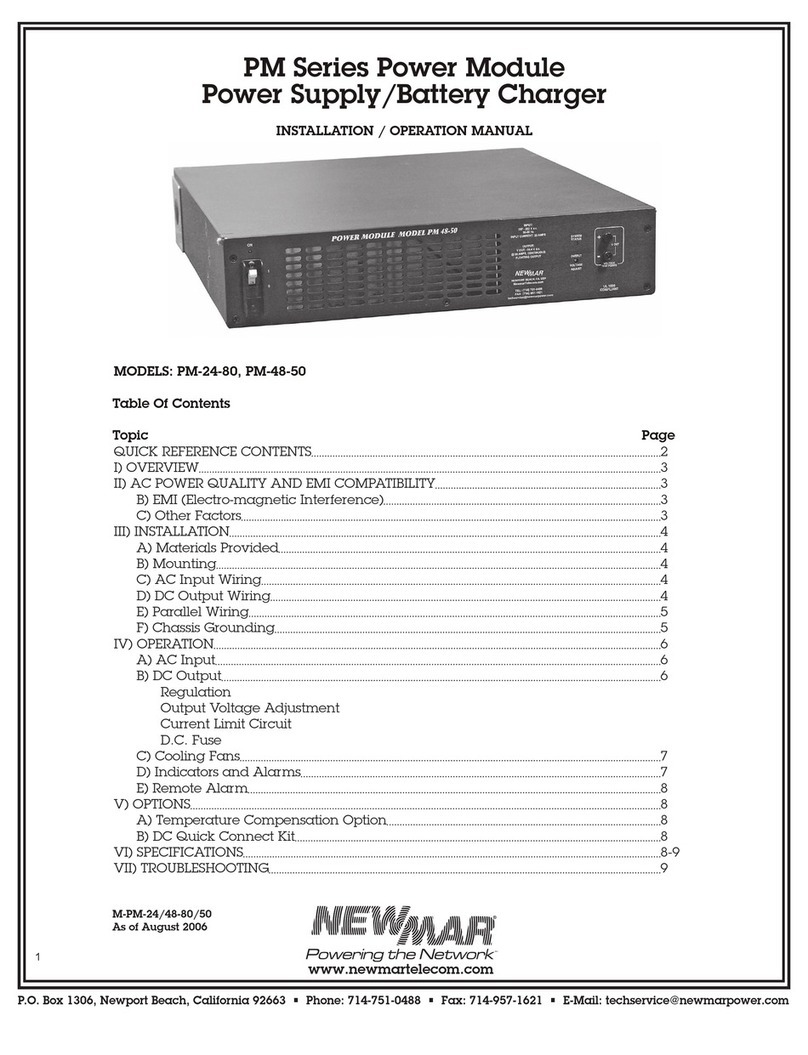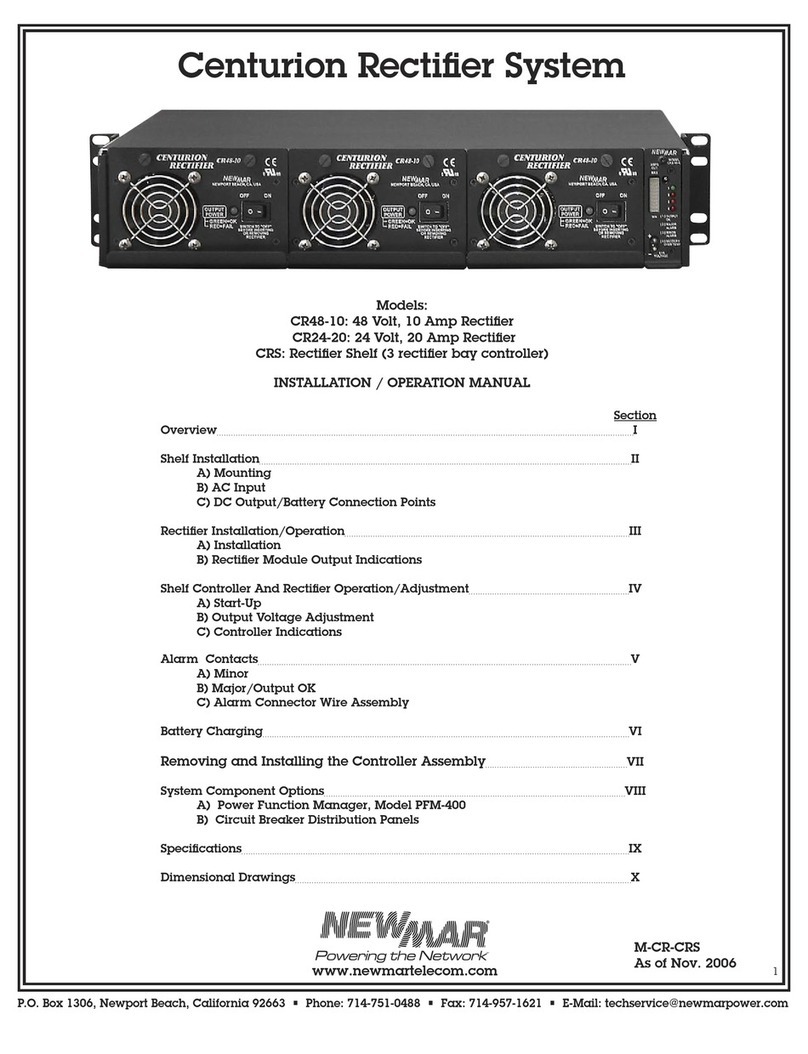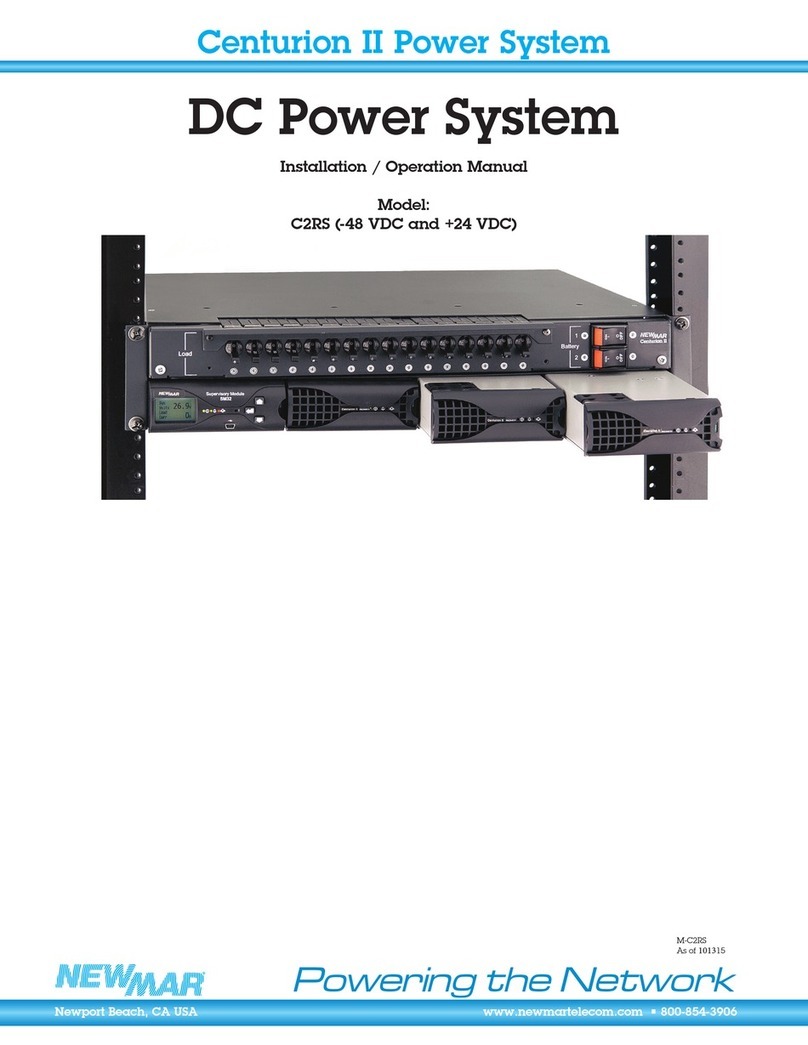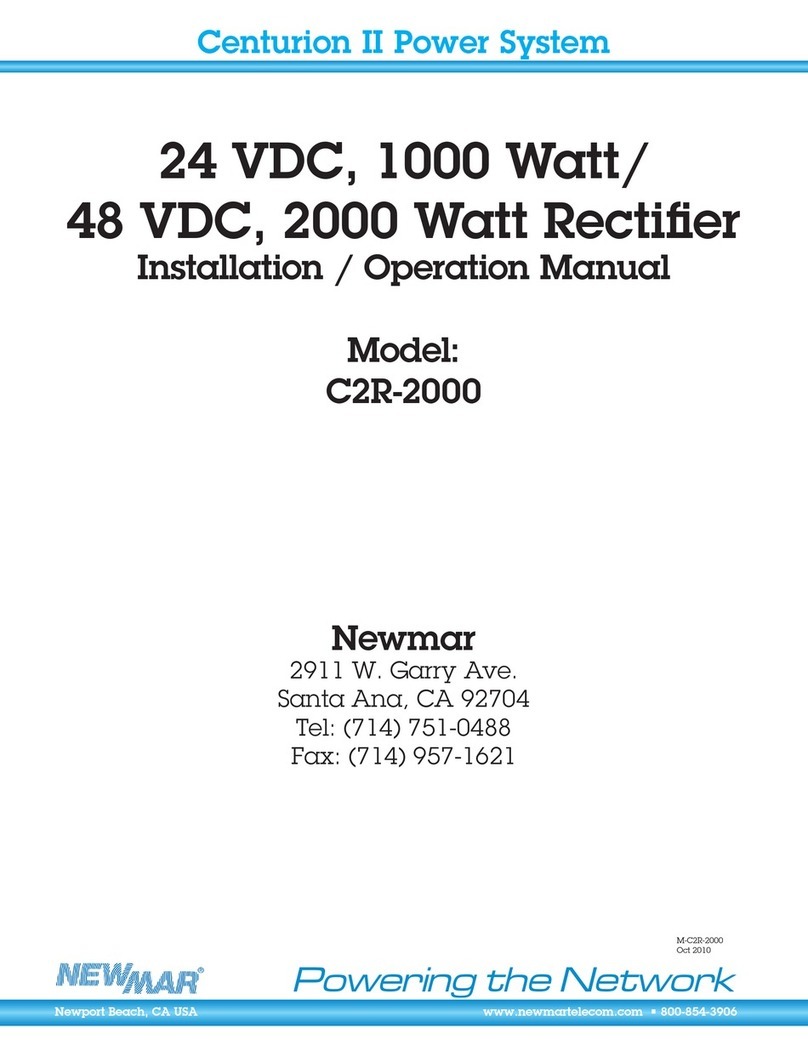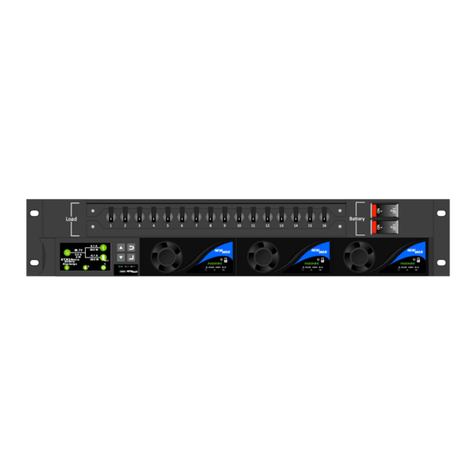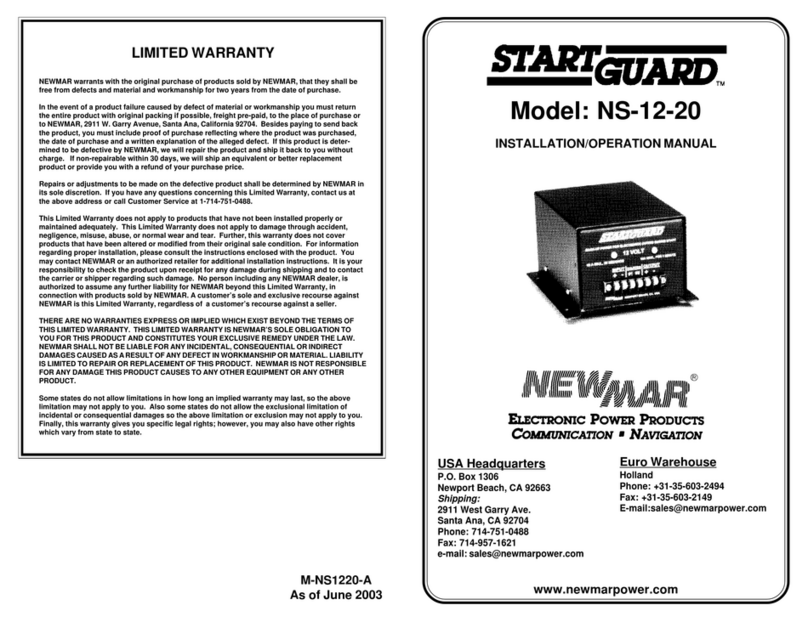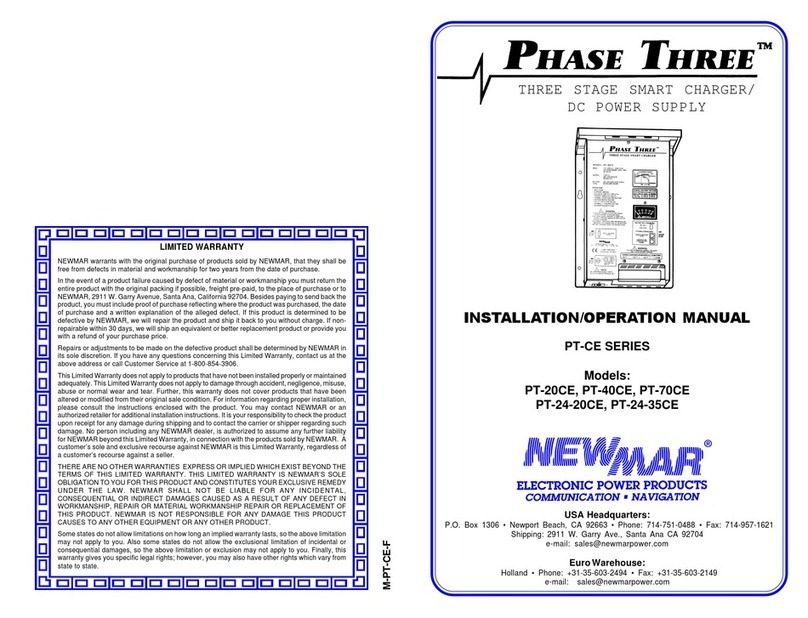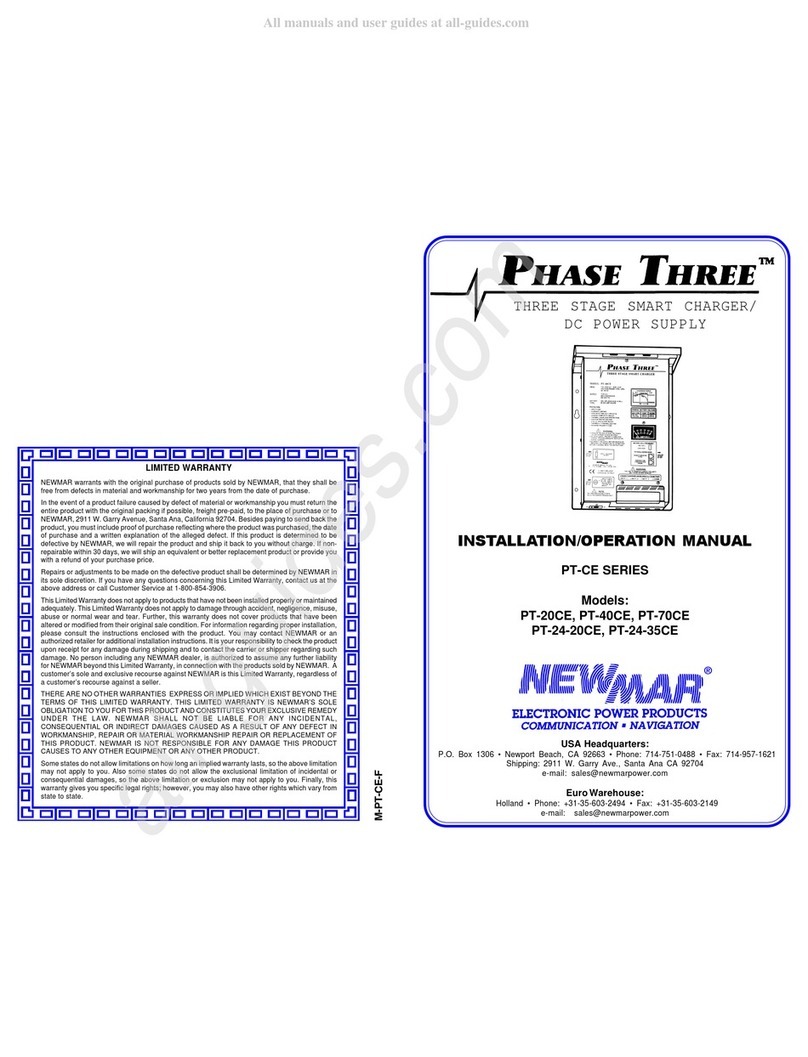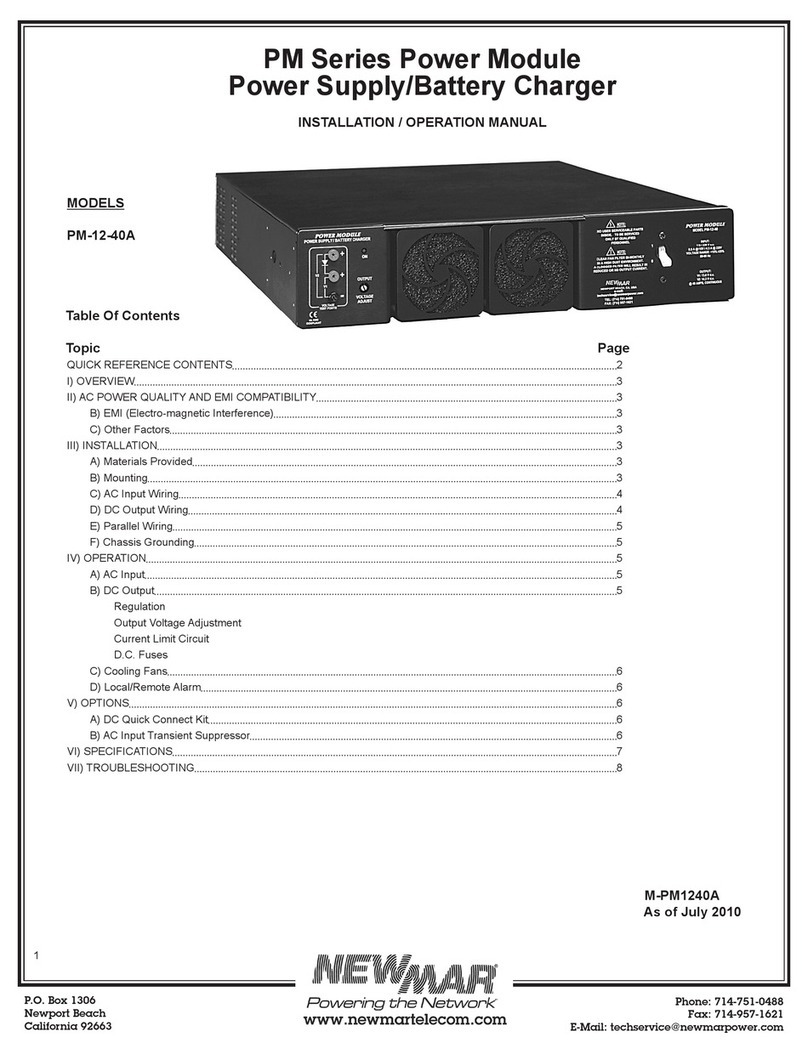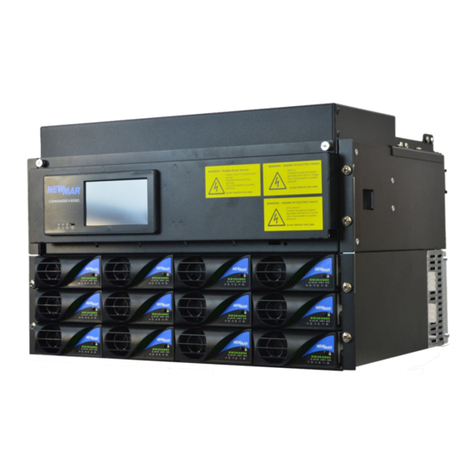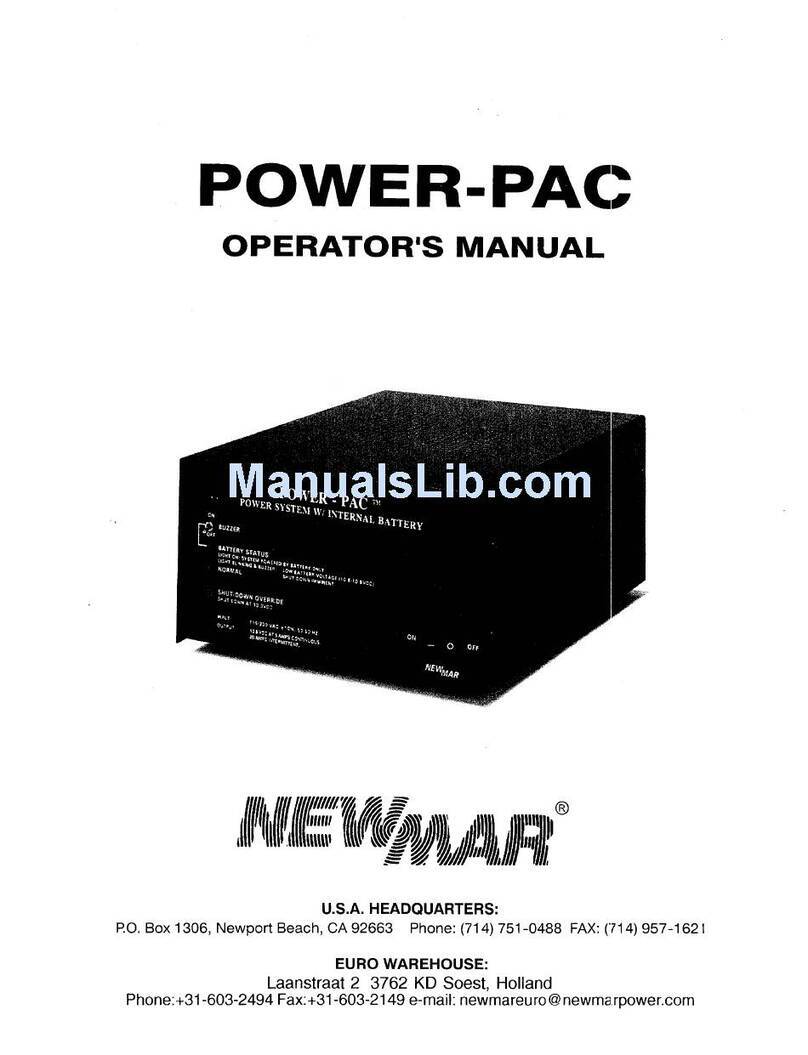
Rectifier Installation Manual Page 4 of 10
1.4 Output Over-Voltage Shut Down
The rectifier will automatically shut down if the output voltage exceeds the preset value. The Over
Voltage Shut Down point reduces by about 1V at full load to ensure the rectifier producing the Over Voltage Shut
Down turns off first. The Over Voltage Shutdown voltage is preset in the factory but may be adjusted.
1.5 Input Over/Under Voltage Shut Down
If the input voltage is outside the specified range, the rectifier may shut down until the voltage returns within the
specified range.
1.6 Rectifier Soft Start and Inrush Current
On start-up, the peak mains inrush current is limited to twice the maximum operating current. The output voltage
and current will rise slowly from zero during start-up. This means that the AC input power slowly increases over a 7
second period, providing a gentle load characteristic for any standby generators.
1.7 Over Temperature Turn Down/Shutdown
When the rectifier reaches its maximum operating temperature (internal), the rectifier will progressively reduce the
output current to attempt to reduce the heat within the unit. In extreme circumstances, the rectifier internal
temperature may continue to rise even with reduced output current. In this case the rectifier will totally shutdown
and will restart when the internal temperature returns within limits.
The maximum ambient operating temperature range at full power is: -10 to 45°C.
The rectifier will operate in ambient temperatures up to 70°C but the rectifier will de-rate its output power to keep
internal temperatures within the allowable range.
1.8 Reverse Polarity Protection
The rectifier has an internal reverse polarity protection fuse and crowbar diode fitted. These parts are not user
serviceable, and the rectifier will require returning for servicing if incorrect polarity is applied to the output.
1.9 Active Load Share
The rectifier will actively current share with other rectifiers in the same DC system. The rectifiers are interconnected
through pin 11 of their connector. The hardware in each rectifier looks at this current share bus and adjusts its
output current to align with other rectifiers. In addition to this control, the monitor can compare rectifier output
currents and adjust individual rectifiers to achieve current share. The rectifier current share bus is generally used
within one rack of rectifiers and the monitor control is used to make separate racks share with each other.
1.10 Fan Cooling
The rectifier constantly monitors its internal temperature, ambient temperature and output current, then adjusts fan
speed to ensure continued operation. This control of fan speed ensures that rectifier acoustic noise and dust
accumulation are minimized.
If the fan fails and cannot be restarted, then the current limit will further reduce to self-protect the rectifier. The
rectifier will continue to operate if the internal temperature stays within allowable limits.
1.11 Serial Alarm and Control Interface
The rectifier, when installed in an Newmar rectifier shelf or system, is controlled via the serial interface by the system
monitor. The system monitor can set up control parameters and receive alarm information via this interface.
If this interface is disconnected or fails for some reason the rectifier will operate with the parameters last sent from
the monitor and current share will revert to the rectifier current share bus. The voltage set point reverts to the default
setting after 8 minutes of no monitor communications.
